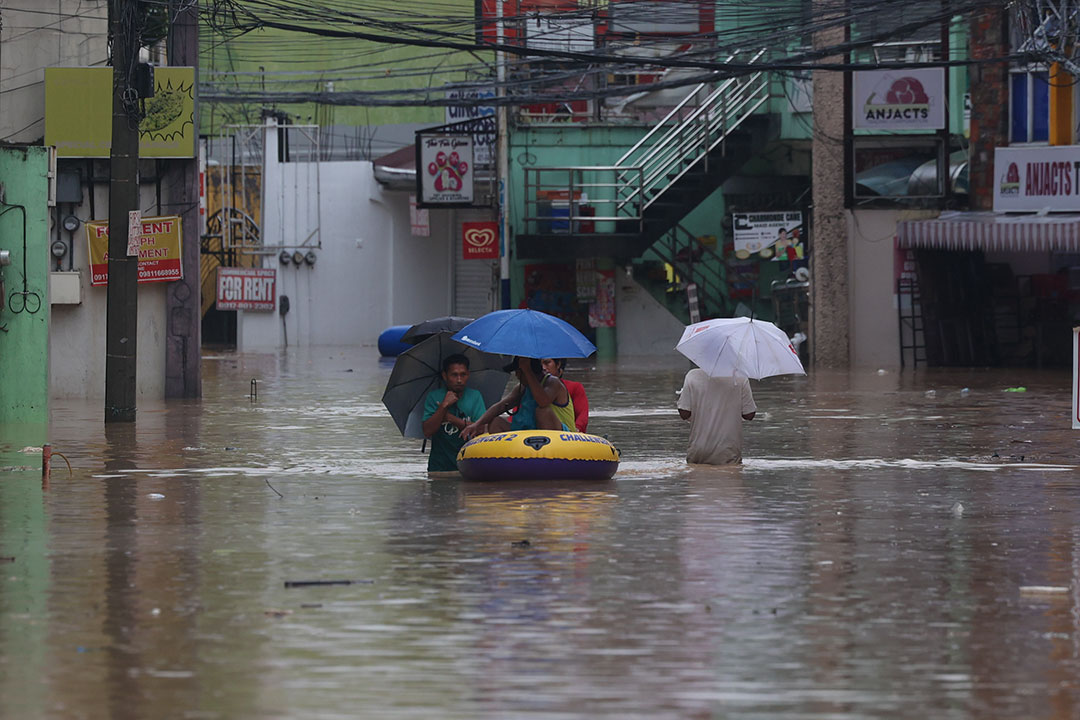
By Katherine K. Chan
TROPICAL CYCLONES located hundreds of kilometers away from the Philippines trigger heavier rains and flooding in the country than those that make landfall, a recent study showed.
At least one-third of the rainfall recorded from July to September 2024 can be attributed to typhoons far from the country yet still affecting the southwest monsoon, research by the state weather bureau, the Manila Observatory, Ateneo de Manila University, and their Japanese partner institutions revealed.
“An average of 33.1% of the rainfall during the southwest monsoon season is caused by tropical cyclones that do not make landfall but enhance the Habagat, pulling in large amounts of moisture from the surrounding seas and turning otherwise moderate monsoon rains into torrential downpours,” the report read.
It said that while the “direct” effect of tropical cyclones produces an average of 15.4% of the rainfall during the season, its “indirect” effect brings over twice the said amount.
The remaining 51.5% is caused by the southwest monsoon alone, it added.
Scientists behind the study discovered this phenomenon after analyzing weather data and rainfall patterns along the western coast of the country during the peak southwest monsoon season from 1961 to 2022.
“It was found that tropical cyclones that form farther away from the Philippines tend to move northeast of Luzon and are thereby more likely to enhance the monsoon,” the Ateneo de Manila University said in a statement.
“In contrast, those that form closer to the country often take shorter, westward tracks and thus have a weaker effect on the southwest monsoon,” it added.
The southwest monsoon, locally referred to as “Habagat,” brings warm and moist winds from the southwest, producing rainfall over the western parts of the Philippines between May and September.
In July 2024, Super Typhoon Carina, although it did not make landfall, strengthened the southwest monsoon, triggering torrential rains and widespread flooding throughout Luzon. Its impact claimed 48 lives and left P8 billion in damage.
The study urged local governments and disaster response agencies to learn the difference between rains induced by the southwest monsoon alone and those influenced by tropical cyclones.
This could help authorities and flood-prone communities, such as Metro Manila, Zambales, Ilocos, and Palawan, prepare better for calamities.
“Understanding these distinctions is crucial for local governments and disaster response agencies, especially as climate change increases the unpredictability of both tropical cyclones and seasonal rainfall,” the study read.
Last month, the Philippine Atmospheric, Geophysical, and Astronomical Services Administration (PAGASA) announced the start of the rainy season due to the southwest monsoon.
In a 4 p.m. weather bulletin, PAGASA said the southwest monsoon will bring cloudy skies with scattered rains and thunderstorms over Metro Manila, Mimaropa, Cavite, Laguna, Batangas, Zambales, Bataan, the rest of Visayas and Mindanao; while the rest of Luzon may experience partly cloudy to cloudy skies with isolated rain showers and thunderstorms.
A low-pressure area was spotted 1,050 kilometers east of southeastern Luzon at 3 p.m., which could bring cloudy skies with scattered rains and thunderstorms over Caraga, eastern Visayas, Catanaduanes, Albay, Sorsogon, and Masbate.